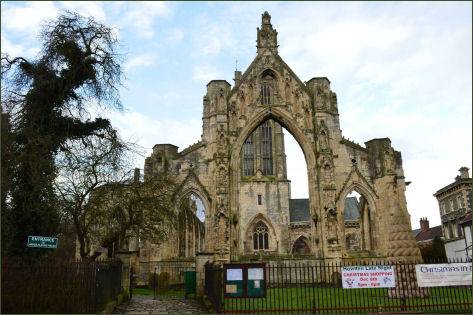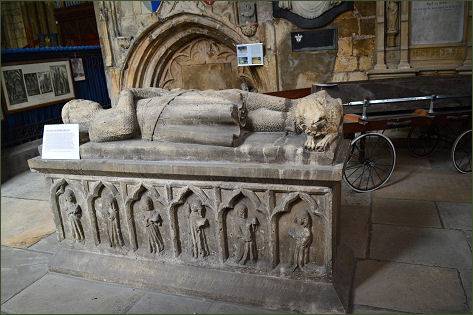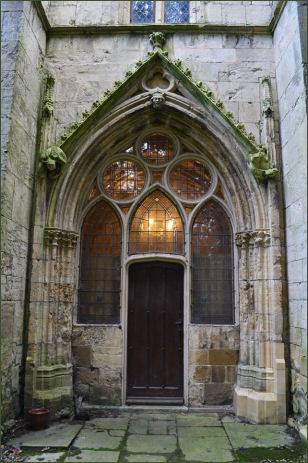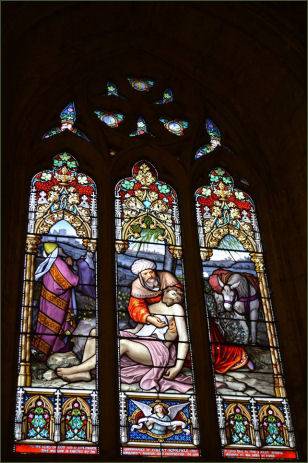Howden Minster
OS grid reference:- SE 747 282
Howden Minster, once one of the largest churches in the north of England, has its origins in the eighth century. The Saxon princess St Osana is believed to buried there. The present church was begun after Howden was used by the Prince Bishops of Durham as a centre of administration. Work began on the Minster in 1228, although it was not completed until the fifteenth century when the chapter house and top of the tower was added by Bishop Walter de Skirlaw.In the fourteenth and fifteenth centuries, Howden became a centre for pilgrims due to John of Howden's alleged miracles in the latter part of the thirteenth century.


John of Howden had acquired a reputation as a poet in Norman French and Latin writing on religious and lyrical subjects, and had been the confessor of Queen Eleanor of Provence, the wife of King Henry III. Visitors to his tomb included Kings Edward I, Edward II and Henry V.
Although the minster was not destroyed in Henry VIII's Dissolution of the Monasteries, the choir or chancel was allowed to fall into ruin, and only the nave was used for services. In 1548, King Edward VI dissolved the Collegiate churches, including Howden. During the reign of his sister, Elizabeth I, the revenues of the Manor of Howden were given to local landowners, who neglected to repair the choir of the church, which over time fell into ruin. During the Civil War Parliamentarians troops en-route to besiege Wressle Castle, used the building as a stable. They damaged the interior, destroying the organ, much of the wooden structures, and some of the stonework. In September 1696 the roof of the choir fell in. It was not until 1748 that the site was cleared. The ruins are now in the care of English Heritage.


The nave of the monastic church now serves as the parish church of Howden. The interior contains the medieval memorials in the Saltmarshe Chantry, including the effigies of Sir John Metham (d. 1311) and his wife Sybell (d.1335). In the chantry is the tomb of Sir Peter Saltmarshe (d. 1338).
Images courtesy of Paul Johnson
Abbeys and Churches of Yorkshire
